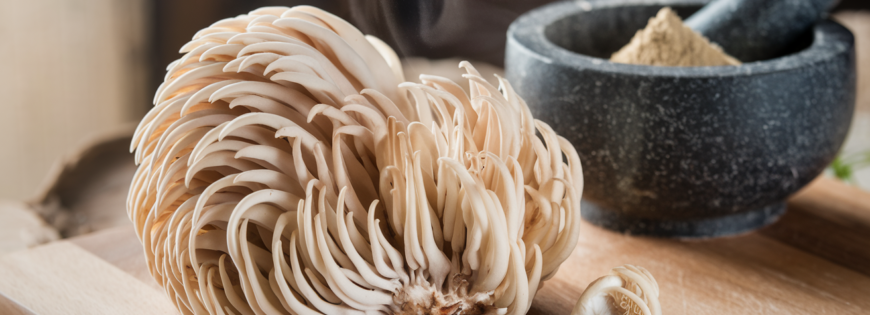Lion’s Mane Mushroom: Nature’s Cognitive Enhancer?
Imagine a mushroom that not only resembles a cascading lion’s mane but might also help sharpen your mind and protect your body. Lion’s mane mushroom (Hericium erinaceus) has been revered in traditional Chinese medicine for centuries, but it’s only recently caught the attention of Western researchers for its potential brain-boosting properties. With preliminary studies suggesting benefits ranging from improved cognitive function to reduced inflammation, this unique fungus is quickly becoming a star in the world of natural health supplements.
But what exactly makes this fluffy white mushroom so special? Is it truly the brain food that some claim it to be, or is the hype outpacing the science? In this comprehensive guide, we’ll explore everything you need to know about lion’s mane mushroom—from its rich nutritional profile and bioactive compounds to its various consumption methods and important safety considerations. Whether you’re curious about natural cognitive support or simply interested in expanding your culinary horizons, join us as we uncover the fascinating potential of this remarkable fungus.
What is Lion’s Mane Mushroom?
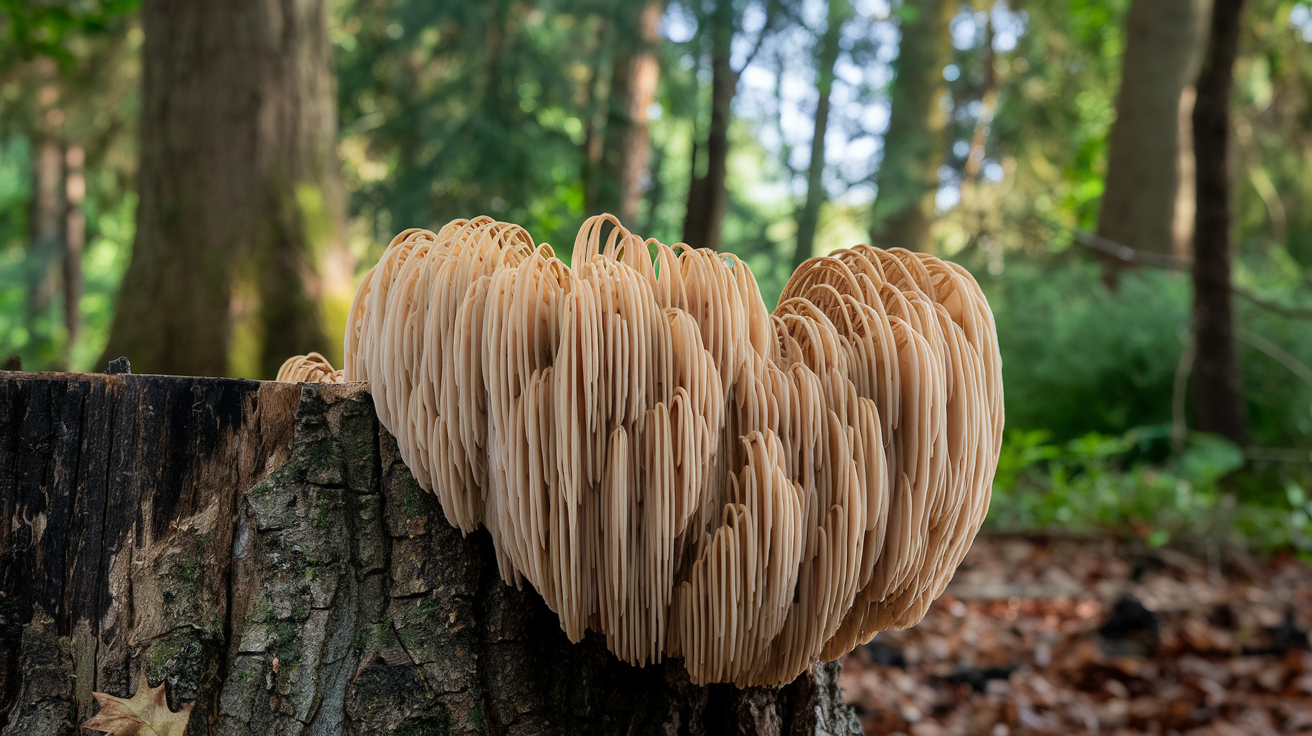
Scientific classification and physical characteristics
Ever seen a mushroom that looks like it’s straight out of a fantasy novel? That’s Lion’s Mane for you. This isn’t your average mushroom hanging out in the produce section.
Lion’s Mane (Hericium erinaceus) belongs to the tooth fungus family Hericiaceae. Scientists love putting things in neat categories, and this fluffy mushroom fits into the kingdom Fungi, phylum Basidiomycota, class Agaricomycetes, order Russulales.
But let’s get real – the cool part isn’t its scientific classification. It’s how this mushroom looks.
Lion’s Mane doesn’t have the typical cap and stem structure you’re used to seeing. Instead, it grows in cascading white tendrils that look remarkably like a lion’s mane (surprise, surprise) or a white waterfall frozen in time. These icicle-like spines can grow up to 3-4 inches long, creating a spectacular shaggy appearance that’s impossible to miss in the wild.
When young, these mushrooms are bright white and become yellowish or brownish as they age. The entire fruiting body can reach impressive sizes, sometimes growing as large as a softball or even a basketball in perfect conditions.
Touch a fresh Lion’s Mane and you’ll notice its unique texture – slightly rubbery but with a firmness that speaks to its dense internal structure. Unlike button mushrooms that bruise and break easily, Lion’s Mane has a substantial heft to it.
The spines aren’t just for show – they’re actually where the mushroom produces its spores. Under a microscope, these spores appear white, smooth, and roughly oval-shaped.
What about the smell? Fresh Lion’s Mane has a subtle, sweet aroma that some people compare to seafood. This carries over to its flavor profile, which many describe as similar to crab or lobster when cooked – making it a favorite among gourmet chefs looking for plant-based seafood alternatives.
Inside, the flesh is white and fibrous. Cut into it and you’ll see a stringy, meat-like texture that contributes to its popularity in vegetarian cooking. Unlike some mushrooms that turn to mush when cooked, Lion’s Mane maintains its satisfying bite.
One of the most fascinating aspects of Lion’s Mane is its growth pattern. The mushroom starts as a compact white mass that gradually develops its characteristic dangling spines as it matures. If you’re lucky enough to find one in the wild, you’ll want to harvest it while the spines are still white – that’s when it’s at its peak flavor and medicinal potency.
Natural habitat and growth patterns
Lion’s Mane isn’t exactly a social butterfly in the mushroom world. You won’t find it growing in neat rings on your lawn like some fungi. This mushroom prefers the quiet dignity of hardwood forests, where it’s been thriving for thousands of years.
In North America, Europe, and Asia, Lion’s Mane makes its home primarily on hardwood trees. It has a particular fondness for American beech, walnut, maple, oak, and sycamore. Unlike mushrooms that grow from the ground, Lion’s Mane is what mycologists call a “saprophyte” – it feeds on dead or dying wood, playing a crucial role in forest decomposition.
You’ll typically spot this fuzzy character growing on wounds in living trees, on dead standing trees, or on fallen logs. It tends to reappear in the same spots year after year until it has consumed all available nutrients from its host.
Timing matters when hunting for Lion’s Mane. In North America, the prime season runs from late summer through fall, though in milder climates it can occasionally be found during winter months. The mushroom tends to fruit when temperature and humidity conditions are just right – typically after periods of rain when the forest is still damp.
What’s particularly interesting about Lion’s Mane’s growth pattern is its life cycle. It begins as invisible mycelium – thin, white, thread-like structures that spread throughout the wood. This mycelium can live for years inside a tree, only producing the visible mushroom fruiting bodies when conditions are perfect for reproduction.
When it does decide to fruit, Lion’s Mane often emerges from cracks or wounds in trees, starting as a small white bump that quickly develops into its distinctive shaggy form. A mature specimen can grow surprisingly fast, sometimes adding visible mass daily during its peak growth phase.
Unlike some mushrooms that release their spores over just a day or two, Lion’s Mane is a marathon runner. It can continue releasing spores for weeks as long as conditions remain favorable. These microscopic spores ride air currents, hoping to land on suitable hardwood to start the cycle anew.
The mushroom has adapted to its arboreal lifestyle perfectly. Its tooth-like structure allows it to maximize spore production while maintaining a firm grip on its vertical growing surface. The cascading teeth point downward, allowing gravity to help disperse its spores efficiently.
Commercial growers have figured out how to mimic these natural conditions. They typically cultivate Lion’s Mane on sterilized hardwood sawdust blocks or logs, maintaining the high humidity and indirect light that the mushroom loves. Even in these controlled conditions, Lion’s Mane maintains its wild character, refusing to be rushed and developing at its own pace.
Historical use in traditional Asian medicine
Long before scientists in white lab coats started studying Lion’s Mane, traditional healers in China, Japan, and Korea knew this mushroom had something special going on.
Dating back more than 2,000 years, Lion’s Mane (called “Houtou” in China, “Yamabushitake” in Japan) wasn’t just another ingredient in the medicine cabinet. It was reserved for royalty and the elite – a testament to how highly it was valued. Ancient Chinese medical texts described it as a “gift of God” that could promote good digestion, general vigor, and strength.
In traditional Chinese medicine (TCM), practitioners classified Lion’s Mane as having properties that strengthened the five internal organs – the liver, spleen, lung, heart, and kidneys. They believed it nourished the “gut and spirit,” preventing what they called “deficiency-type” disorders.
Buddhist monks were particularly fond of this mushroom. Historical accounts tell us they used Lion’s Mane tea to enhance their focus during meditation. They believed the mushroom heightened their brain power and strengthened their “spiritual potency.” These monks were onto something – modern research now confirms Lion’s Mane contains compounds that support cognitive function.
In Japan, the Yamabushitake name translates to “mountain priest mushroom,” named after the Yamabushi sect of hermit monks who wore distinctive flowing white robes that resembled the mushroom’s appearance. These mountain ascetics incorporated the mushroom into their practices for its purported ability to enhance concentration.
Throughout East Asia, Lion’s Mane wasn’t just consumed for specific ailments. It was considered a longevity tonic – something to be taken regularly to promote overall health and extend lifespan. Elderly people were often prescribed preparations containing the mushroom to maintain mental clarity and physical vigor.
Traditional preparation methods varied by region. Some healers dried and powdered the mushroom to be taken with warm water. Others created decoctions by simmering it for hours to extract its beneficial compounds. In some cases, Lion’s Mane was combined with other medicinal herbs in complex formulas tailored to specific health conditions.
Beyond its medicinal applications, Lion’s Mane had cultural significance. In China, it was sometimes carved into decorative objects when dried, and mushroom-shaped artifacts resembling Lion’s Mane have been found in ancient tombs, suggesting its importance extended beyond medicine into spiritual and cultural realms.
Ancient healers may not have had microscopes or clinical trials, but their observational skills were sharp. They noted that regular consumption of Lion’s Mane seemed to benefit the digestive system, enhance energy, and help maintain mental sharpness into old age – all benefits that modern science is now confirming through rigorous research.
What’s particularly remarkable is how consistent these traditional uses were across different Asian cultures, despite limited communication between regions. From the mountains of Japan to the imperial courts of China, healers independently recognized the same patterns of benefits from this distinctive mushroom.
This rich history of traditional use provided the foundation for modern scientific interest in Lion’s Mane. When researchers began investigating which traditional medicines might hold real therapeutic potential, the extensive historical use of Lion’s Mane made it a priority candidate for study.
Nutritional Profile and Active Compounds
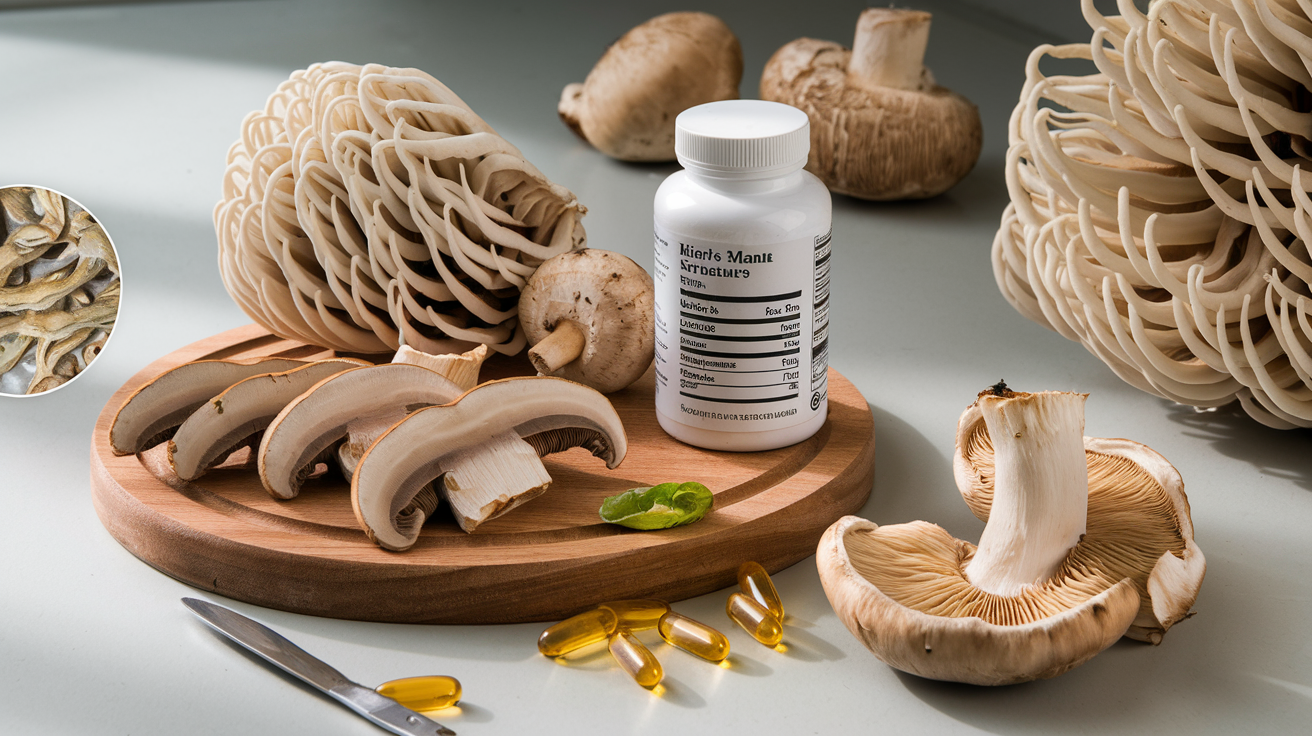
Vitamins and minerals content
Lion’s Mane mushroom isn’t just fascinating to look at—it’s packed with nutritional goodness that might surprise you. This fuzzy fungus contains an impressive array of vitamins and minerals that support overall health.
For starters, Lion’s Mane is rich in B vitamins, particularly B12, which is rare in plant foods. This makes it especially valuable for vegetarians and vegans who often struggle to get enough B12 in their diets. These B vitamins play crucial roles in energy production, brain function, and cell metabolism.
When it comes to minerals, Lion’s Mane doesn’t disappoint either. It contains potassium, zinc, iron, and selenium. Potassium helps regulate fluid balance and muscle contractions, while zinc supports immune function and wound healing. Iron is essential for oxygen transport in the blood, and selenium acts as a powerful antioxidant.
Here’s a quick breakdown of the key nutrients found in 100g of dried Lion’s Mane mushroom:
| Nutrient | Amount |
|---|---|
| Protein | 22g |
| Carbohydrates | 73g |
| Fat | 3.5g |
| Fiber | 35g |
| Potassium | 2,100mg |
| Zinc | 4.4mg |
| Iron | 1.3mg |
| Selenium | 0.35mg |
The protein content in Lion’s Mane is particularly impressive for a mushroom, containing all essential amino acids. This complete protein profile makes it a valuable addition to plant-based diets.
What’s more, Lion’s Mane is incredibly low in calories while being nutrient-dense. This combination makes it perfect for anyone looking to add nutritional value to their meals without adding significant calories.
Another standout feature? Lion’s Mane contains absolutely zero cholesterol and very little sodium, making it heart-friendly and suitable for those monitoring their blood pressure.
Beneficial polysaccharides and proteins
The real magic of Lion’s Mane lies in its complex carbohydrates—specifically, its polysaccharides. These aren’t your ordinary carbs. The beta-glucans found in Lion’s Mane are some of the most studied compounds in medicinal mushrooms, and for good reason.
Beta-glucans are complex sugars that form part of the cell walls in Lion’s Mane. Research shows these compounds have remarkable immunomodulating properties, meaning they can help balance the immune system—ramping it up when needed and calming it down when it’s overactive.
One particular type of polysaccharide in Lion’s Mane, called HLPE-II, has been studied for its potential to enhance the activity of macrophages—immune cells that engulf and destroy pathogens. This could explain why traditional medicine has long used Lion’s Mane to support overall immunity.
Beyond beta-glucans, Lion’s Mane contains heteroglucans, heteroxylans, and other complex polysaccharides that work synergistically to provide health benefits. These compounds aren’t just immune-boosters—they also have potential anti-inflammatory, antioxidant, and prebiotic effects.
The protein content in Lion’s Mane deserves special attention too. Unlike many plant foods, Lion’s Mane contains all nine essential amino acids, making it a complete protein source. This is particularly valuable for those following plant-based diets who might otherwise struggle to get complete proteins.
Some of the proteins found in Lion’s Mane have been identified as bioactive peptides, meaning they may have additional health-promoting effects beyond basic nutrition. For instance, researchers have isolated a lectin from Lion’s Mane that has shown promising anticancer properties in lab studies.
The fungal proteins in Lion’s Mane also contain unique enzymes that may aid in digestion and nutrient absorption. Some of these enzymes can break down complex compounds that our bodies might otherwise have difficulty processing.
What makes these polysaccharides and proteins even more impressive is how they interact with each other. The protein-bound polysaccharides in Lion’s Mane create complex structures that may be more bioavailable and effective than either component alone.
Bioactive compounds: hericenones and erinacines
Now we’re getting to the compounds that truly set Lion’s Mane apart from other mushrooms—hericenones and erinacines. These natural compounds are almost exclusively found in Lion’s Mane mushroom, and they’re causing quite a stir in the scientific community.
Hericenones are found primarily in the fruiting body (the part of the mushroom we can see), while erinacines are concentrated in the mycelium (the root-like structure beneath the surface). Both compounds share something remarkable in common: they can stimulate the production of nerve growth factor (NGF) in the brain.
NGF is a protein that’s essential for the growth, maintenance, and survival of nerve cells. It’s like fertilizer for your brain, helping neurons thrive and form new connections. The problem? NGF is a large molecule that can’t cross the blood-brain barrier on its own. This is where hericenones and erinacines come in—they’re small enough to cross this barrier and can trigger NGF production directly in the brain.
Research on these compounds has exploded in recent years. Studies suggest they may help protect against neurodegenerative conditions like Alzheimer’s and Parkinson’s disease by promoting nerve cell regeneration and reducing inflammation in the brain.
Beyond their neurological benefits, these compounds have shown other promising effects. Some hericenones have demonstrated antimicrobial properties, potentially helping to fight harmful bacteria. Certain erinacines have shown potential anti-cancer effects in preliminary studies.
The concentration of these compounds can vary significantly depending on growing conditions, substrate (what the mushroom grows on), and the part of the mushroom used. This is why quality matters when choosing Lion’s Mane supplements—not all products will contain the same levels of these beneficial compounds.
What’s particularly exciting about these compounds is that they appear to work synergistically with the polysaccharides and proteins also found in Lion’s Mane. This whole-food synergy may explain why traditional medicine has valued this mushroom for centuries, long before we identified its individual components.
Recent research has identified at least 10 different erinacines (named erinacine A through K) and several hericenones, each with slightly different properties and potential benefits. This diversity of compounds creates a complex phytochemical profile that researchers are still working to fully understand.
The most fascinating aspect of these compounds might be their specificity. Unlike many other natural substances that have general antioxidant or anti-inflammatory effects, hericenones and erinacines appear to have very targeted actions on specific neural pathways—a precision that pharmaceutical companies often try to replicate in their products.
While we’re still uncovering all the benefits of these unique compounds, what’s clear is that they contribute significantly to making Lion’s Mane one of the most neurologically active natural foods discovered to date.
Potential Health Benefits
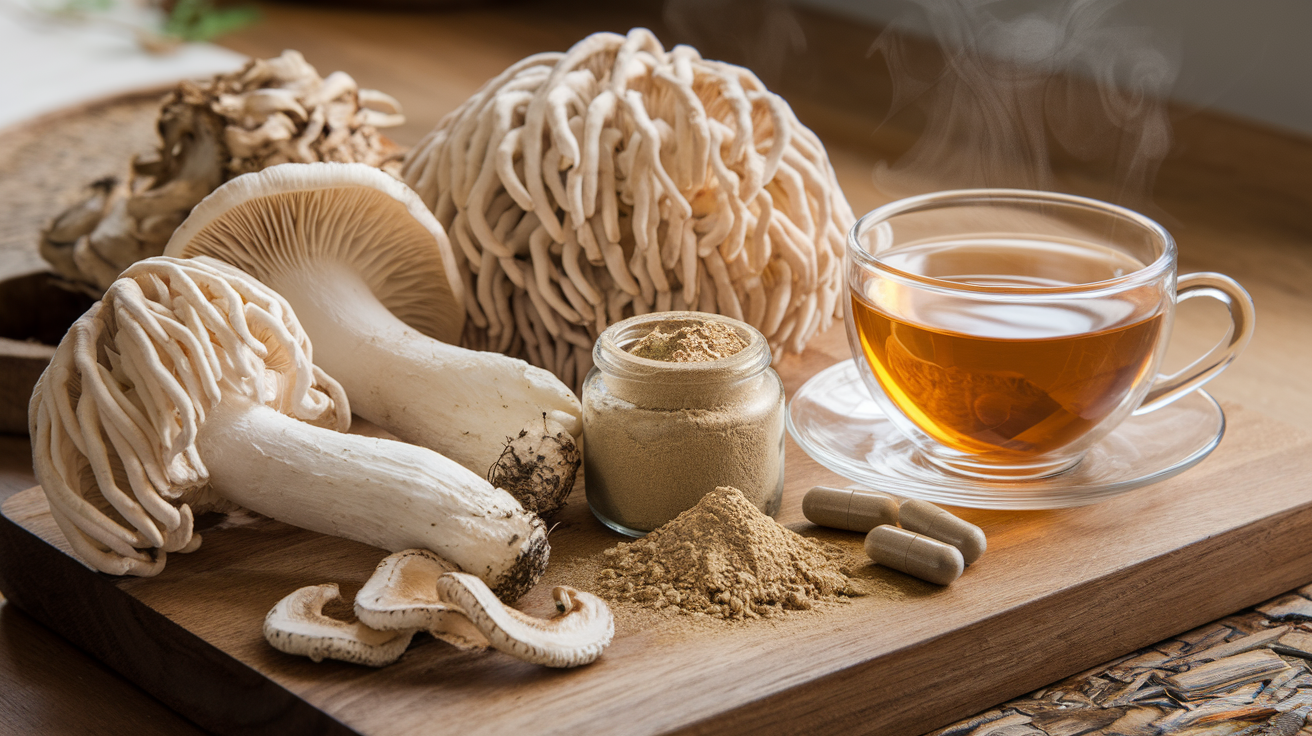
A. Cognitive function and brain health enhancement
Ever noticed how your brain gets foggy after a long day? Lion’s Mane mushroom might be the natural solution you’ve been searching for.
This fascinating fungus contains compounds called hericenones and erinacines that can actually stimulate brain cell growth. That’s right – these compounds trigger the production of nerve growth factor (NGF), which helps your neurons thrive and form new connections.
In real-world terms, this means Lion’s Mane could help with:
- Better memory
- Sharper focus
- Improved concentration
- Enhanced mental clarity
Studies with older adults with mild cognitive impairment showed significant improvements after taking Lion’s Mane supplements for just 16 weeks. Participants were better at remembering things and could think more clearly compared to those taking placebos.
For anyone worried about age-related cognitive decline, Lion’s Mane offers a glimmer of hope. Early research suggests it might help protect against Alzheimer’s disease by reducing the buildup of amyloid-beta plaques – those nasty protein clumps that damage brain cells.
And it’s not just for older folks. Students, professionals, and anyone looking for a mental edge can benefit from Lion’s Mane’s brain-boosting effects. Some users report feeling more productive and mentally sharp within weeks of starting supplementation.
B. Anti-inflammatory and antioxidant properties
Inflammation is at the root of almost every chronic health problem we face today. Lion’s Mane mushroom packs a powerful punch against this silent health destroyer.
The mushroom contains over 30 different antioxidant compounds that help neutralize free radicals – those unstable molecules that cause oxidative stress and damage your cells. By sweeping up these harmful compounds, Lion’s Mane helps reduce inflammation throughout your body.
What does this mean for you? Less pain, better recovery, and stronger protection against chronic diseases.
Lion’s Mane specifically targets inflammatory pathways in the body, acting as a natural anti-inflammatory without the side effects of pharmaceutical options. People with conditions like arthritis often report decreased pain and improved mobility after adding this mushroom to their routine.
The antioxidant effects also make Lion’s Mane great for:
- Supporting your immune system
- Protecting against cellular damage
- Slowing down aging processes
- Helping recovery after intense workouts
One particularly impressive study showed that Lion’s Mane extract reduced inflammation markers by nearly 60% in test subjects. That’s comparable to some prescription medications, but from a completely natural source.
C. Digestive and gut health support
Your gut health affects everything from your mood to your immune system. Lion’s Mane mushroom can be a game-changer for digestive wellness.
This fungus has been used for centuries in traditional medicine to treat gastritis and other digestive issues. Modern research is now backing up these traditional uses. Lion’s Mane contains powerful compounds that can:
- Protect the gut lining from damage
- Reduce inflammation in the digestive tract
- Support the growth of beneficial gut bacteria
- Help prevent and heal ulcers
For people with irritable bowel syndrome (IBS) or inflammatory bowel diseases like Crohn’s or ulcerative colitis, Lion’s Mane offers natural relief. It helps calm the inflammation driving these conditions while supporting healing of the damaged intestinal tissue.
In one fascinating study, Lion’s Mane extract prevented ulcer formation in rats by protecting the stomach lining against damage from alcohol. The protective effect was substantial – reducing ulcer size by over 70% compared to untreated animals.
The mushroom also acts as a prebiotic, feeding the good bacteria in your gut. This promotes a healthy microbiome balance, which we now know is crucial for overall health and even mental wellness.
People who regularly consume Lion’s Mane often report:
- Less bloating and gas
- More regular bowel movements
- Reduced heartburn
- Better digestion overall
D. Heart health and cholesterol management
Heart disease remains the leading killer worldwide, but Lion’s Mane mushroom offers several ways to protect your cardiovascular system.
This remarkable fungus helps manage cholesterol – one of the biggest risk factors for heart disease. Studies show Lion’s Mane can:
- Lower total cholesterol levels
- Reduce LDL (the “bad” cholesterol)
- Increase HDL (the “good” cholesterol)
- Decrease triglycerides (blood fats)
But it doesn’t stop there. Lion’s Mane also helps prevent oxidation of cholesterol, which is actually what makes cholesterol dangerous. Oxidized cholesterol is what builds up in artery walls, leading to plaque formation and eventually heart attacks or strokes.
The anti-inflammatory properties we discussed earlier play a huge role in heart health too. Chronic inflammation damages blood vessels and contributes to atherosclerosis (hardening of the arteries). By reducing inflammation, Lion’s Mane helps keep your arteries flexible and healthy.
Some research indicates Lion’s Mane may also help manage blood pressure and prevent blood clotting – both critical factors in heart disease prevention.
In one animal study, Lion’s Mane extract reduced cholesterol levels by 32% and LDL cholesterol by 45% after just 28 days. Human studies are showing promising results as well, with participants experiencing improved lipid profiles after regular supplementation.
E. Possible cancer-fighting properties
While research is still in early stages, Lion’s Mane mushroom shows exciting potential in the fight against cancer.
Laboratory studies have demonstrated that compounds in Lion’s Mane can:
- Slow or stop the growth of certain cancer cells
- Trigger apoptosis (cell death) in cancer cells
- Prevent cancer cells from spreading
- Enhance the effectiveness of conventional cancer treatments
The most promising research has focused on digestive cancers, including stomach, colon, and liver cancers. In test tube studies, Lion’s Mane extract was shown to kill cancer cells at rates up to 50% while leaving healthy cells untouched.
Several unique compounds in Lion’s Mane are responsible for these effects, including beta-glucans and specific proteins that appear to target cancer cells specifically. The mushroom’s immune-boosting properties may also play a role by helping the body’s natural defenses recognize and destroy cancer cells more effectively.
One particularly interesting study found that a protein isolated from Lion’s Mane completely inhibited the growth of human leukemia cells. Another showed that Lion’s Mane extract reduced the size of colon tumors in mice by 38%.
Of course, these findings don’t mean Lion’s Mane can cure cancer on its own. But they do suggest it might be a valuable complementary approach alongside conventional treatments. Some cancer patients use Lion’s Mane to help manage side effects of chemotherapy and radiation, reporting improvements in energy levels and overall wellbeing.
The antioxidant properties of Lion’s Mane may also help prevent cancer by protecting cells from DNA damage that can lead to cancer development in the first place.
While more human clinical trials are needed before definitive claims can be made, the preliminary evidence makes Lion’s Mane one of the most promising natural compounds being studied in cancer research today.
Forms and Consumption Methods
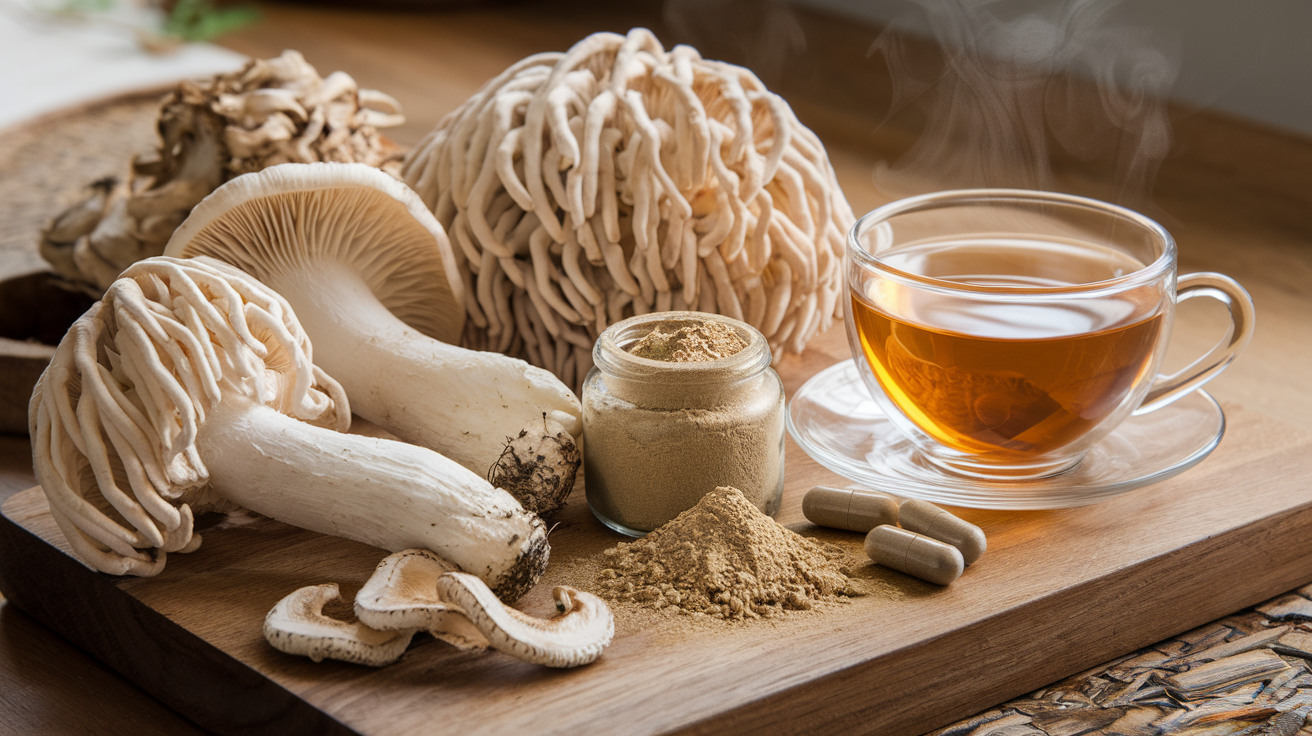
Fresh and dried mushrooms in cooking
Lion’s Mane mushroom isn’t just a brain-boosting supplement—it’s a culinary delight that’s gaining popularity in kitchens worldwide. The mushroom has a distinctive appearance (it literally looks like a lion’s mane) and a flavor profile that many compare to seafood, particularly crab or lobster.
Fresh Lion’s Mane has a spongy texture that soaks up flavors beautifully. When you get your hands on fresh ones, look for white, unblemished specimens with long, intact “teeth” or spines. They should feel firm but slightly spongy, not mushy or discolored.
Cooking with fresh Lion’s Mane is straightforward:
- Slice into steaks or tear into bite-sized pieces
- Sauté in butter or olive oil until golden brown (about 5-7 minutes per side)
- Season simply with salt and pepper to appreciate its natural flavor
The mushroom develops a beautiful golden-brown crust when cooked properly, with a tender, meaty interior that’s slightly reminiscent of seafood. This unique flavor makes it perfect for vegetarian “crab cakes” or as a meat substitute in various dishes.
Dried Lion’s Mane offers convenience and concentrated flavor. The drying process intensifies the umami qualities, making it excellent for:
- Mushroom broths and stocks
- Reconstituted and added to stir-fries
- Ground into powder for seasoning
To rehydrate dried Lion’s Mane:
- Soak in warm water for 20-30 minutes
- Reserve the soaking liquid for stocks or sauces
- Use the reconstituted mushroom as you would fresh
Many home cooks find that a mix of both fresh and dried can elevate dishes—using the reconstituted mushrooms in the recipe while adding the soaking liquid for depth of flavor.
Supplements: powders, extracts, and capsules
Not everyone has the time (or taste) for cooking with mushrooms daily. That’s where supplements come in, offering concentrated doses of Lion’s Mane’s beneficial compounds in convenient forms.
Powders are versatile and can be incorporated into your daily routine with minimal fuss. The earthy, slightly sweet powder blends well into:
- Morning coffee or tea
- Smoothies and protein shakes
- Oatmeal or yogurt
- Soups and sauces
Most Lion’s Mane powder supplements contain between 500-1000mg per serving. The main advantage is flexibility in dosing and the ability to taste the product (which helps ensure you’re getting actual mushroom, not just mycelium or filler).
Liquid extracts offer rapid absorption and higher bioavailability. These come in dropper bottles and can be:
- Added directly under the tongue for fastest absorption
- Mixed into beverages
- Incorporated into recipes
- Taken on the go
Liquid extracts are particularly useful for those who need precise dosing or have trouble swallowing pills. They typically come in dual-extracted form, meaning both water and alcohol extraction methods have been used to capture the full spectrum of beneficial compounds.
Capsules are the most convenient option, offering precise dosing without taste. They’re ideal for:
- People who dislike the mushroom flavor
- Those with busy lifestyles
- Travel and on-the-go use
- Consistent daily dosing
When shopping for supplements, look for products that specify:
- Fruiting body vs. mycelium (fruiting body is preferred)
- Extraction method (dual extraction is ideal)
- Beta-glucan content (the higher, the better)
- Third-party testing for purity and potency
The supplement market is unfortunately flooded with low-quality products, so doing your homework pays off. Many cheaper supplements use mycelium grown on grain rather than actual fruiting bodies, which significantly reduces the active compound content.
Recommended dosages and preparation techniques
Finding your optimal Lion’s Mane dosage is somewhat personal, as sensitivity to its effects varies widely. However, research and traditional use provide some helpful guidelines.
For cognitive benefits, most studies use dosages ranging from 500mg to 3000mg daily of dried mushroom extract. Here’s a general dosing framework:
| Purpose | Daily Dosage (Extract) | Frequency |
|---|---|---|
| General wellness | 500-1000mg | Once daily |
| Cognitive support | 1000-2000mg | Split into 2 doses |
| Therapeutic use | 2000-3000mg | Split into 3 doses |
| Culinary use (dried) | 2-5g | As needed in recipes |
Start at the lower end of the dosage spectrum and gradually increase over several weeks. This allows you to monitor how your body responds and minimize any potential digestive adjustment.
For maximum benefit, consistency is key. Lion’s Mane isn’t a quick fix—most people report noticeable cognitive benefits after 2-4 weeks of daily use, with effects building over time.
Timing considerations:
- For cognitive benefits: Taking with breakfast and lunch allows the compounds to be active during your working hours
- For sleep support: Some find taking Lion’s Mane in the evening improves dream clarity and sleep quality
- With food: Taking supplements with a meal containing some fat may improve absorption
When preparing Lion’s Mane for maximum therapeutic benefit, extraction is crucial. The mushroom’s cell walls contain chitin (the same material in crab shells), which human digestive systems struggle to break down.
Hot water extraction (essentially making a strong tea) pulls out the water-soluble compounds, including the beta-glucans responsible for many of the immune-modulating effects. To make a basic Lion’s Mane tea:
- Simmer 5-10g dried mushroom in 2 cups water for 20-30 minutes
- Strain and enjoy, adding honey if desired
- The same mushroom pieces can be re-extracted 2-3 times
Alcohol extraction captures different compounds, particularly the terpenoids and some of the neurotrophic compounds that support brain health. A basic tincture can be made by:
- Soaking dried mushroom in high-proof alcohol (at least 40%, like vodka) for 2-4 weeks
- Straining and storing in a dark bottle
- Taking by the dropperful (typically 30-60 drops daily)
For the most comprehensive extraction, many enthusiasts use a dual-extraction method:
- Perform hot water extraction first
- Then soak the same mushroom material in alcohol
- After straining, combine both extracts
- Reduce by simmering to desired concentration
Commercial supplements often use more sophisticated extraction methods, including pressure cooking, ultrasonic extraction, and enzymatic processes to maximize bioactive compound yield.
If making your own preparations seems daunting, quality pre-made supplements offer convenience without sacrificing effectiveness. Just remember that Lion’s Mane, like other medicinal mushrooms, isn’t regulated like pharmaceuticals, so brand research is essential.
Research Status and Limitations

Current scientific evidence and promising findings
If you’ve been curious about Lion’s Mane mushroom, you’re not alone. The research world is buzzing about this fuzzy fungus, and for good reason.
The science behind Lion’s Mane is starting to stack up. Most studies focus on two specific compounds: hericenones and erinacines. These natural chemicals appear to stimulate nerve growth factor (NGF) production in the brain. Why does that matter? NGF helps maintain and repair your neurons—the cells that make your brain work.
Lab studies have shown some pretty incredible results. When researchers expose brain cells to Lion’s Mane extracts, they actually grow and regenerate faster. That’s not something you see with your average mushroom.
In animal studies, Lion’s Mane has consistently improved memory and cognitive function. Mice with Alzheimer’s-like conditions showed dramatic improvements after being given Lion’s Mane supplements. Their maze-navigation skills improved, and they showed fewer signs of memory loss.
But it’s not just about brain health. The research suggests Lion’s Mane might help with:
- Reducing inflammation throughout the body
- Supporting digestive health
- Boosting the immune system
- Fighting anxiety and depression
- Speeding recovery from nerve damage
A 2020 review published in the International Journal of Molecular Sciences confirmed that Lion’s Mane contains compounds with neuroprotective effects. The researchers found evidence that these mushrooms might help prevent or treat neurodegenerative diseases like Alzheimer’s and Parkinson’s.
One of the most promising human studies came from Japan. Researchers gave 30 older adults with mild cognitive impairment either Lion’s Mane or a placebo for 16 weeks. The Lion’s Mane group scored significantly better on cognitive tests, but here’s the kicker—when they stopped taking it, the benefits faded. This suggests that Lion’s Mane might need to be taken continuously for ongoing benefits.
Gaps in human clinical trials
The research looks promising, but let’s get real—there are some serious gaps in what we know about Lion’s Mane.
Most of the existing research has been done in test tubes or on animals. While these studies are important first steps, they don’t always translate to real-world benefits in humans. Our bodies are complex systems, and what works in a petri dish or in mice doesn’t always work the same way in people.
The human studies we do have are limited in several key ways:
- Small sample sizes (often fewer than 50 participants)
- Short duration (typically weeks rather than months or years)
- Lack of standardization in the Lion’s Mane preparations used
- Insufficient control for placebo effects
- Limited diversity in study participants
This makes it difficult to draw firm conclusions about effectiveness, proper dosing, or long-term safety.
Another major gap is understanding how Lion’s Mane interacts with medications. Many people most interested in its cognitive benefits are older adults who often take multiple prescriptions. We simply don’t have good data on potential interactions.
The quality and consistency of Lion’s Mane supplements vary wildly across products. Different growing conditions, extraction methods, and parts of the mushroom used can all affect the concentration of active compounds. Without standardization, it’s tough to compare results across studies or make solid recommendations.
There’s also the question of bioavailability—how much of the active compounds actually make it into your bloodstream and brain after you take a supplement? Some research suggests that the beneficial molecules in Lion’s Mane might have trouble crossing the blood-brain barrier, which would limit their effects on cognitive function.
Perhaps most concerning is the lack of research on specific populations. We have almost no data on:
- Safety during pregnancy or breastfeeding
- Effects on children and adolescents
- Impacts on people with existing mental health conditions
- Long-term effects of daily supplementation
These gaps aren’t just academic concerns—they represent real questions that consumers should consider before jumping on the Lion’s Mane bandwagon.
FDA status and regulatory considerations
The regulatory landscape for Lion’s Mane is complicated, and that’s putting it mildly.
In the United States, the FDA hasn’t approved Lion’s Mane to treat, cure, or prevent any disease. This is an important distinction that many supplement companies conveniently gloss over in their marketing.
Lion’s Mane mushroom products are regulated as dietary supplements, not as drugs. This distinction makes a world of difference in terms of oversight. Under the Dietary Supplement Health and Education Act (DSHEA) of 1994, supplements don’t need FDA approval before hitting the market. The manufacturers are responsible for ensuring their products are safe and that any claims they make are not false or misleading.
This creates a situation where the FDA only steps in after problems occur. They don’t test supplements before they’re sold, and they don’t verify that what’s on the label matches what’s in the bottle.
Here’s what this means for you as a consumer:
- No guarantee of quality or purity
- No standardized dosing recommendations
- Limited oversight of manufacturing practices
- Restrictions on what companies can claim about benefits
Supplement companies can make “structure/function” claims (like “supports memory” or “promotes brain health”) but not disease claims (like “treats Alzheimer’s” or “cures depression”). Look closely at Lion’s Mane product labels, and you’ll notice carefully worded claims followed by that familiar disclaimer: “These statements have not been evaluated by the Food and Drug Administration. This product is not intended to diagnose, treat, cure, or prevent any disease.”
The regulatory situation isn’t much clearer in other countries. In Canada, some Lion’s Mane products are approved as Natural Health Products, which requires some pre-market review. The European Food Safety Authority has been more cautious, classifying many mushroom extracts as “novel foods” requiring safety assessment before marketing.
In traditional medicine systems like Traditional Chinese Medicine (TCM), Lion’s Mane (known as Hericium erinaceus) has been used for centuries. However, even in countries where TCM is officially recognized, modern commercial supplements may be subject to different regulations than traditional preparations.
For research to progress, we need better standardization and quality control. Some researchers have called for:
- Establishing standard testing methods for active compounds
- Creating reference materials for quality control
- Developing good manufacturing practices specific to medicinal mushrooms
- Requiring better labeling of growing conditions and extraction methods
Until regulations catch up with the market, consumers need to do their homework. Look for products from reputable companies that voluntarily submit to third-party testing and clearly disclose their sourcing and manufacturing practices.
The current regulatory framework puts a lot of responsibility on you to evaluate claims and products critically. Just because something is natural doesn’t automatically make it safe or effective.
Safety and Precautions
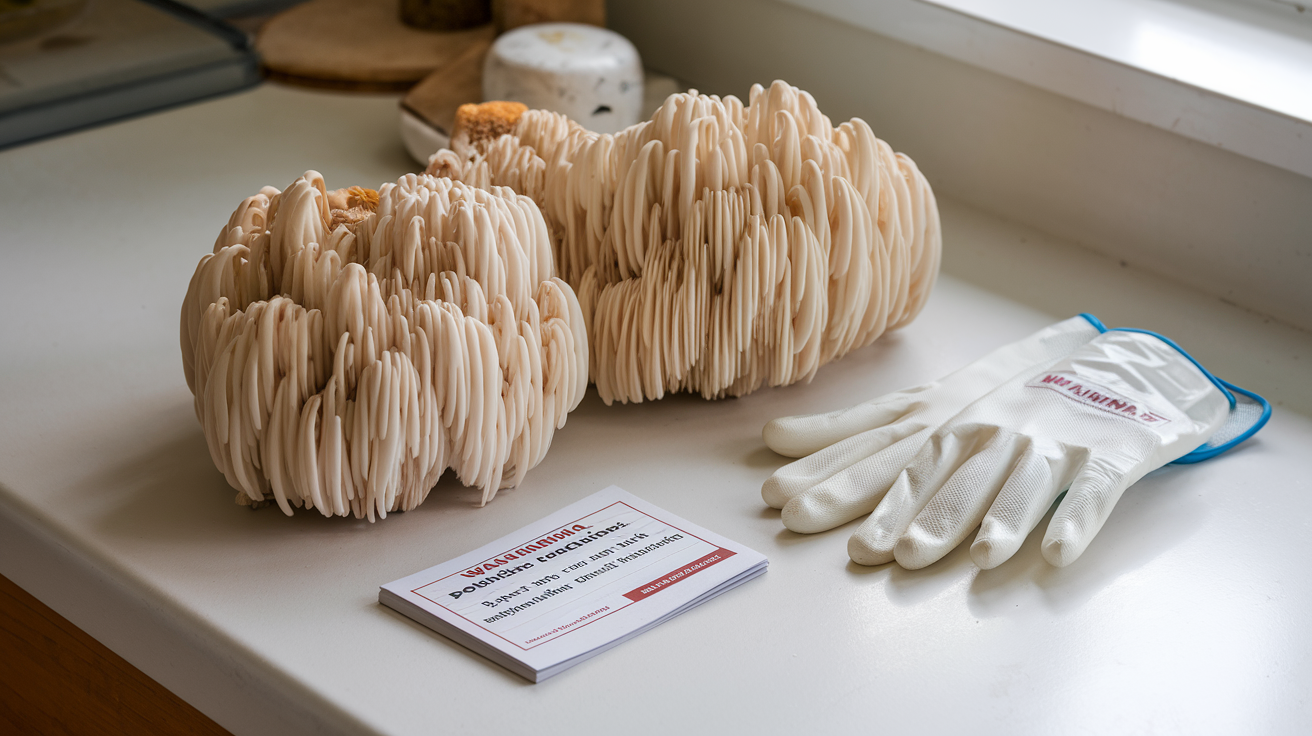
Potential side effects and interactions
Ever taken a supplement that made you feel worse instead of better? Been there. Lion’s Mane mushroom is generally safe for most people, but like anything you put in your body, it comes with potential downsides.
Some folks report digestive issues when starting Lion’s Mane – think mild stomach discomfort, nausea, or changes in bowel movements. Nothing catastrophic, but definitely annoying if you’re not prepared for it. These usually clear up as your body adjusts, but if they persist, that’s your cue to stop and chat with a doctor.
A small number of people experience skin rashes or allergic reactions. Makes sense, right? Mushrooms are fungi, and some people are sensitive to them. If you’ve had reactions to other mushrooms before, proceed with extra caution.
Sleep disturbances pop up occasionally in user reports. Some people notice increased energy or mental alertness that interferes with their normal sleep patterns, especially if they take Lion’s Mane later in the day. Simple fix – take it in the morning instead.
What about drug interactions? This is where things get tricky. Lion’s Mane might affect blood clotting and sugar levels. That means it could potentially interact with:
- Blood thinners like warfarin
- Diabetes medications
- Blood pressure medications
- Immunosuppressants
The problem? We don’t have tons of research on these interactions. Most are theoretical or based on limited studies.
Pre-surgery is another time to be careful. Stop taking Lion’s Mane at least two weeks before any scheduled surgery to prevent potential bleeding complications. Your surgeon will thank you.
Pregnant or breastfeeding? Pump the brakes. There’s just not enough safety data to recommend Lion’s Mane during these critical periods. Better safe than sorry until we know more.
Here’s something people rarely talk about – Lion’s Mane might temporarily increase nerve growth factor (NGF) levels. While this is generally beneficial for brain health, some users report heightened sensitivity to pain or unusual sensations during the initial weeks. Typically temporary, but worth knowing about.
Consultation with healthcare providers
Think you can just start popping Lion’s Mane capsules because your favorite podcast host recommended them? Think again.
Talking to your doctor before starting any new supplement isn’t just standard advice – it’s smart health management. This conversation becomes even more important if you:
- Take prescription medications
- Have pre-existing health conditions
- Are planning surgery
- Are pregnant or breastfeeding
- Have allergies to mushrooms or fungi
Your doctor might not know everything about Lion’s Mane (many aren’t well-versed in mushroom supplements), but they do know your medical history, current medications, and specific health concerns.
When you have that conversation, bring information about the specific product you’re considering. Different extracts and preparations vary in potency and composition. Some Lion’s Mane products focus on mycelium, others on fruiting bodies, and the concentration of active compounds can differ dramatically.
Worried your conventional doctor might dismiss supplements outright? Consider consulting with an integrative medicine physician, naturopathic doctor, or herbalist with mycology knowledge – alongside your regular healthcare provider. These specialists often have more training in supplements and can offer complementary perspectives.
Remember to disclose Lion’s Mane use to all healthcare providers you see. That specialist you’re visiting for an unrelated issue needs to know what supplements you’re taking too. It’s all connected.
After starting Lion’s Mane, track any changes in your health. Keep notes on benefits you notice, side effects that emerge, and how these change over time. This information is gold for your next doctor’s visit and helps them provide better guidance.
Some healthcare providers might recommend blood tests before and after starting Lion’s Mane, especially if you have conditions related to blood sugar, liver function, or clotting. These tests provide objective data about how the supplement affects your body specifically.
Selecting quality products from reputable sources
The supplement world is like the Wild West. FDA regulations for supplements are way less strict than for medications, which means quality varies enormously between products.
Let’s cut through the noise. Here’s what really matters when choosing Lion’s Mane supplements:
First, which part of the mushroom are you getting? The fruiting body (the mushroom part you can see) contains different beneficial compounds than the mycelium (the root-like structure). Many experts prefer extracts from fruiting bodies because they typically contain higher concentrations of the beneficial compounds like hericenones and erinacines. But many products on the market use mycelium grown on grain, which may dilute the active ingredients.
Check if the product specifies the extraction method. Hot water extraction pulls out water-soluble compounds like beta-glucans, while alcohol extraction captures different compounds like triterpenes. Dual-extraction products use both methods to provide a full spectrum of beneficial compounds.
Standardization matters too. Quality products often specify the percentage of active compounds, like beta-glucans or polysaccharides. This tells you the potency is consistent from bottle to bottle.
Third-party testing is non-negotiable. Reputable companies have their products tested by independent laboratories for:
- Potency verification
- Heavy metal contamination
- Microbial contamination
- Pesticide residues
Look for certifications like USP, NSF, or GMP on the packaging. These indicate the product meets certain quality standards.
Country of origin matters with mushrooms. China produces most of the world’s mushroom supplements, and while many Chinese producers make excellent products, some regions have issues with heavy metal contamination or agricultural practices. North American and European producers often adhere to stricter standards but may charge premium prices.
The company’s reputation speaks volumes. Look for brands that:
- Have been in business for several years
- Provide detailed information about sourcing and testing
- Are transparent about their manufacturing processes
- Respond helpfully to customer questions
- Have positive reviews from verified customers
Price isn’t everything, but it’s a clue. Suspiciously cheap Lion’s Mane products likely cut corners somewhere. Growing quality mushrooms, creating proper extracts, and testing thoroughly all cost money. If a product is drastically cheaper than competitors, ask why.
Form matters too. Lion’s Mane supplements come as powders, capsules, tinctures, and even coffees or hot chocolate mixes. Powders let you adjust dosage easily but might taste mushroomy. Capsules are convenient but limit dose flexibility. Tinctures absorb quickly but may contain alcohol. Choose based on your preferences and lifestyle.
Expiration dates and storage instructions aren’t just suggestions. Bioactive compounds in mushrooms can degrade over time, especially in poor storage conditions. Follow the manufacturer’s guidelines and avoid buying in bulk unless you’ll use it quickly.
Specialty retailers focusing on mushroom products often provide better quality and more knowledgeable customer service than general supplement stores. They stake their reputation specifically on mushroom quality and are more likely to source carefully.
Remember, the best Lion’s Mane supplement is one that’s both high-quality and one you’ll actually take consistently. Finding that perfect balance of quality, convenience, and price is your personal sweet spot for reaping the potential benefits of this fascinating fungus.
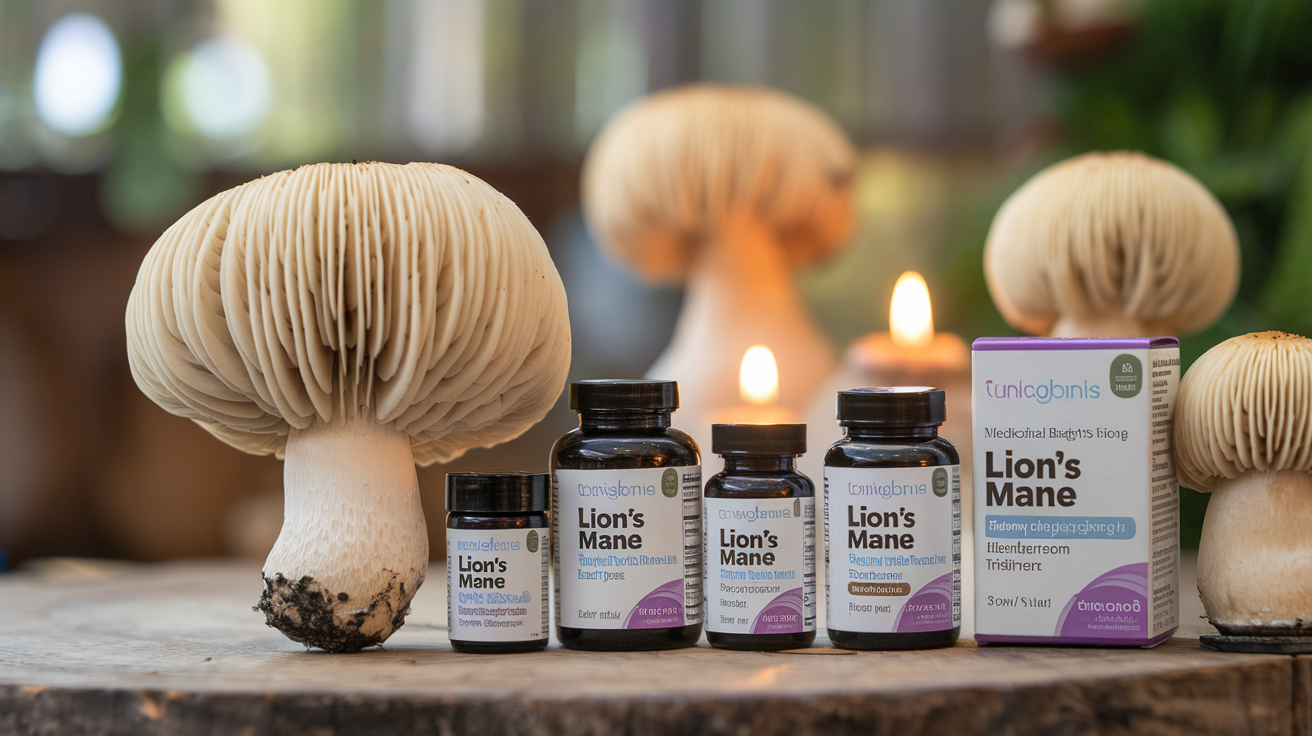
Lion’s Mane mushroom represents a fascinating intersection of ancient wisdom and modern science. With its unique appearance and promising bioactive compounds, this fungus offers potential benefits for cognitive function, inflammation reduction, gut health, and cardiovascular support. While research shows encouraging results, particularly for brain health and nerve regeneration, it’s important to recognize that many studies are preliminary and more human trials are needed to confirm these effects.
Before adding Lion’s Mane to your wellness routine, consult with a healthcare provider, especially if you have existing health conditions. Choose high-quality products from reputable sources, as supplements aren’t strictly regulated by the FDA. Whether you enjoy it as a culinary delight or take it as a supplement, Lion’s Mane mushroom offers an intriguing natural option for those looking to support their overall health and cognitive function in today’s demanding world.


